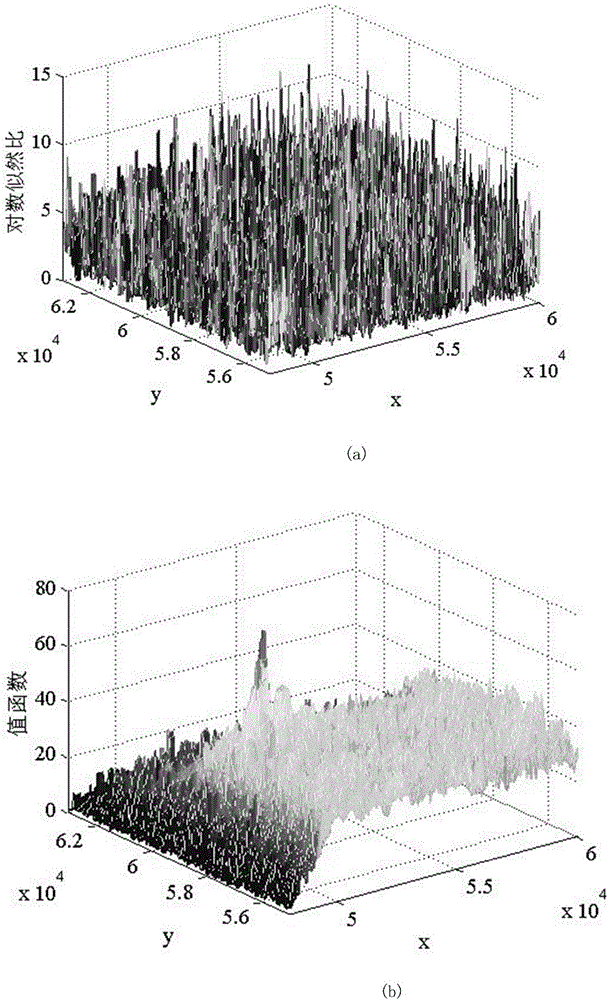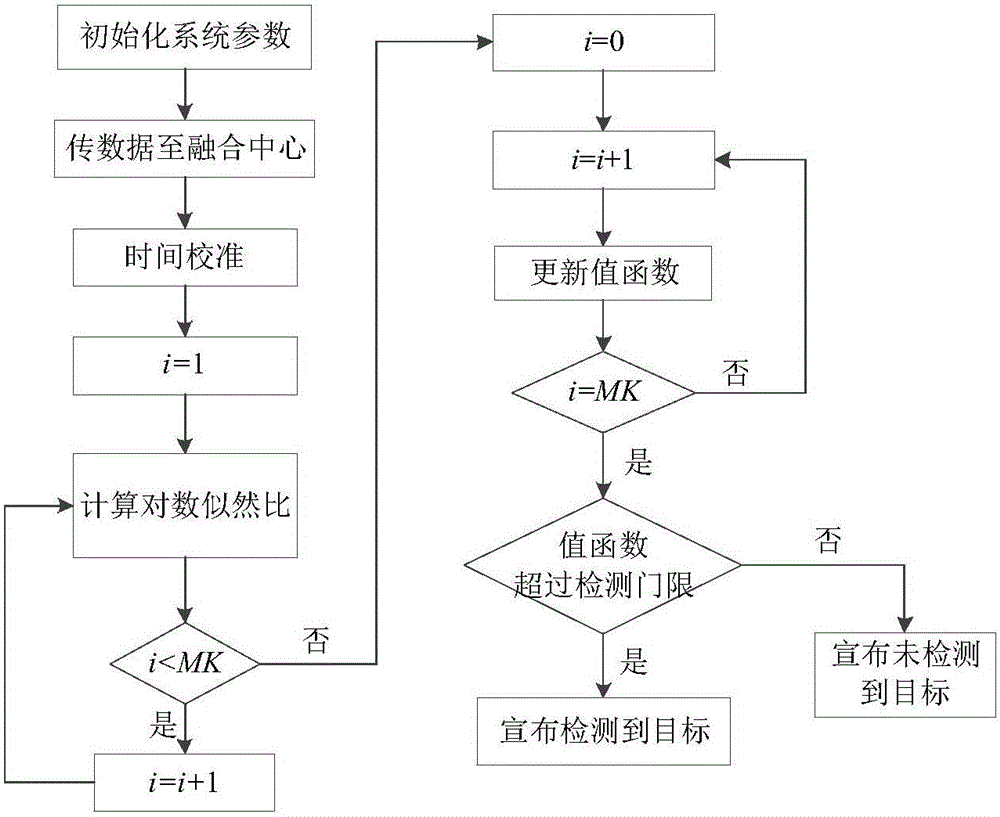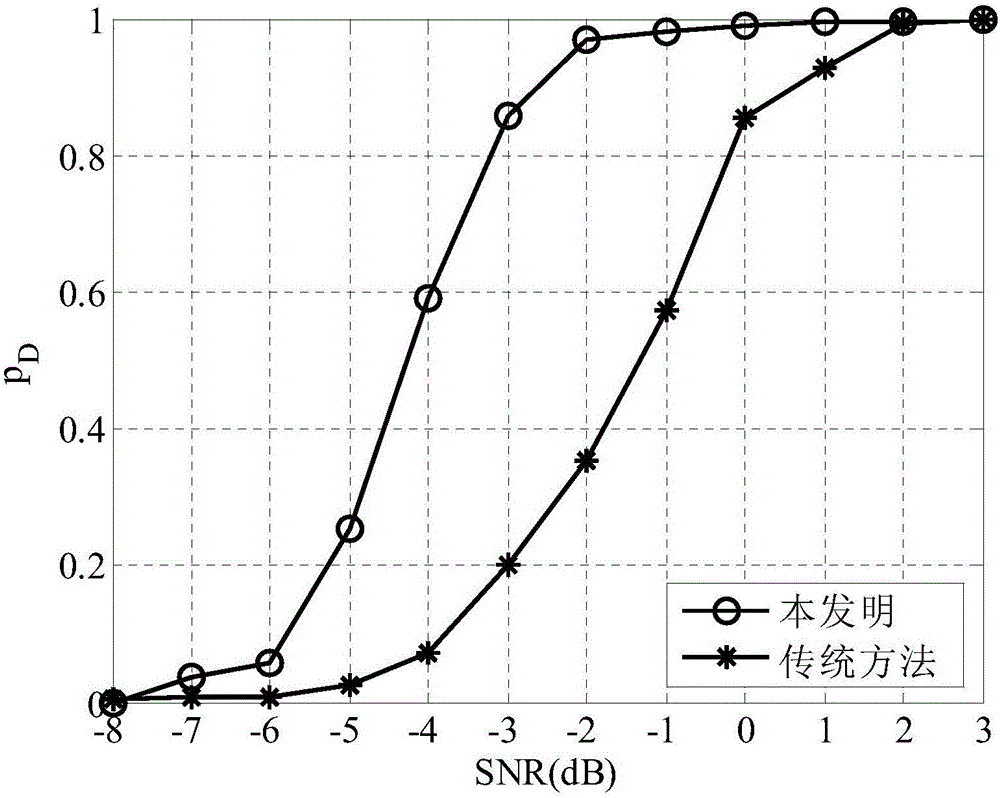Multistation radar asynchronous multiframe joint detection method
A multi-frame joint detection and radar technology, applied in measuring devices, radio wave measurement systems, radio wave reflection/re-radiation, etc., can solve problems such as low signal-to-noise ratio, failure to meet system detection requirements, weak echo, etc. Achieve reliable detection results, improve detection performance, and ensure real-time effects
- Summary
- Abstract
- Description
- Claims
- Application Information
AI Technical Summary
Problems solved by technology
Method used
Image
Examples
Embodiment Construction
[0038] The present invention mainly adopts the method of computer simulation for verification, and all steps and conclusions are verified and confirmed on MATLAB-R2012b. The specific implementation steps are as follows:
[0039] Step 1) Initialize system parameters:
[0040] In this example: the number of radar nodes M = 3, the radar transmission waveform is a simple pulse train, namely Carrier frequency f c =10 9 , the echo signal sampling interval is equal to the pulse repetition frequency, ie T s =T p =10 -3 , the number of samples N=10, the number of data frames transmitted by each radar node to the fusion center K=3, and the corresponding detection threshold V T It is 82.92 obtained by Monte Carlo simulation. Initialize system variables: i=1.
[0041] Step 2) Send the echo signals received by each radar node at K scanning times to the fusion center.
[0042] Step 3) Time Calibration:
[0043] In the fusion center, the echo signals of different scanning moments ...
PUM
 Login to View More
Login to View More Abstract
Description
Claims
Application Information
 Login to View More
Login to View More - R&D
- Intellectual Property
- Life Sciences
- Materials
- Tech Scout
- Unparalleled Data Quality
- Higher Quality Content
- 60% Fewer Hallucinations
Browse by: Latest US Patents, China's latest patents, Technical Efficacy Thesaurus, Application Domain, Technology Topic, Popular Technical Reports.
© 2025 PatSnap. All rights reserved.Legal|Privacy policy|Modern Slavery Act Transparency Statement|Sitemap|About US| Contact US: help@patsnap.com



